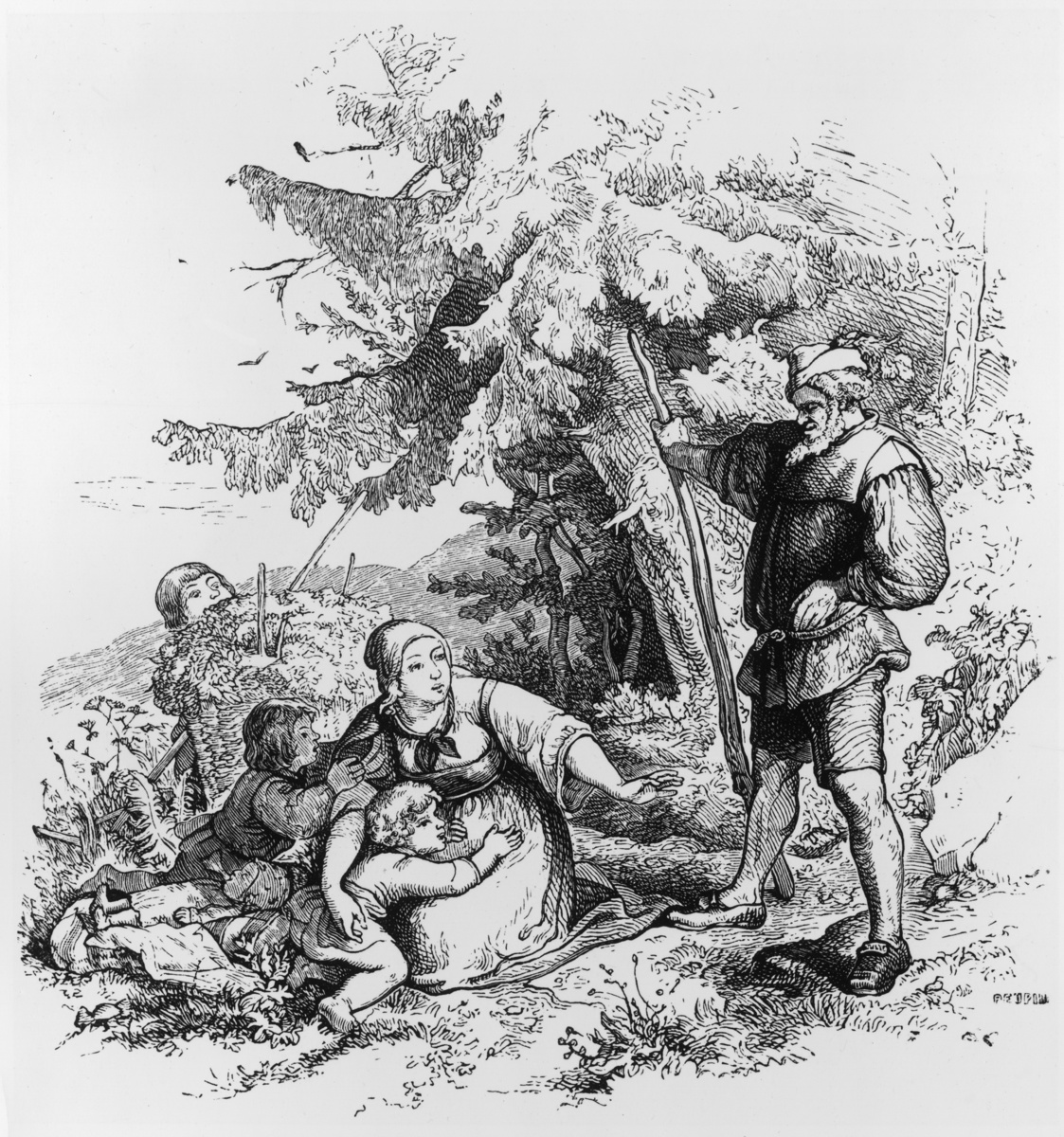Abstract
Like his friend Moritz von Schwind, Adrian Ludwig Richter (1803–1884) rejected the melancholy contemplation of the early Romantics in favor of a more playful, lyrical, imaginary world. Primarily a painter of landscapes, Richter earned his daily bread as a book illustrator, as did many other artists of his generation. In keeping with the Romantics’ admiration of the folk tale, which was held up as a true expression of the naïve and “organic” spirit of pre-modern Germany, Richter cultivated a simple and straightforward style of woodcut engraving. This particular image comes from the 1842 edition of Johann Karl August Musäus’ Volksmärchen der Deutschen [Folk Tales of the Germans], which was originally published in the 1780s. The book’s authenticity was doubted by some nineteenth-century critics who questioned the satirical nature of Musäus’ retellings. It should be remembered, however, that humor, satire, and irony were absolutely central to the Romantic worldview—a point made clear by the writings of some of the best-known Romantics, such as Jean Paul Richter and Clemens Brentano. Wood engraving after a drawing by Adrian Ludwig Richter (1820–1884), 1842.
